The Compound Startup Advantage: Why The CEO of Rippling Believes Focus Is Overrated
SaaStr
APRIL 13, 2025
Organize for parallel execution : Create business units with entrepreneurial leaders who can run individual products relatively independently.
This site uses cookies to improve your experience. To help us insure we adhere to various privacy regulations, please select your country/region of residence. If you do not select a country, we will assume you are from the United States. Select your Cookie Settings or view our Privacy Policy and Terms of Use.
Cookies and similar technologies are used on this website for proper function of the website, for tracking performance analytics and for marketing purposes. We and some of our third-party providers may use cookie data for various purposes. Please review the cookie settings below and choose your preference.
Used for the proper function of the website
Used for monitoring website traffic and interactions
Cookies and similar technologies are used on this website for proper function of the website, for tracking performance analytics and for marketing purposes. We and some of our third-party providers may use cookie data for various purposes. Please review the cookie settings below and choose your preference.

SaaStr
APRIL 13, 2025
Organize for parallel execution : Create business units with entrepreneurial leaders who can run individual products relatively independently.
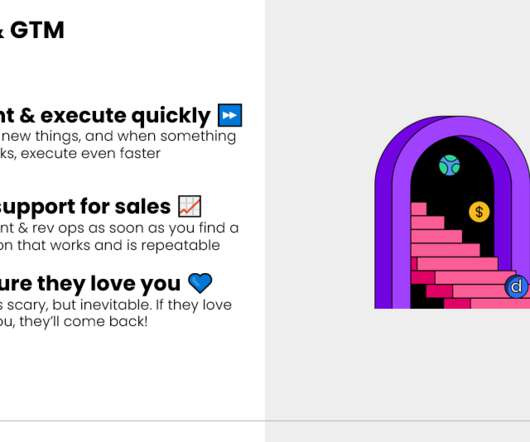
SaaStr
JANUARY 30, 2023
To solve this, Deel interviewed 200 founders seeking answers to the question, “If you’re open to hiring internationally and remotely, what are your biggest challenges, and what kind of product can we build to solve them? Interview personally and define hiring values to build your team. Use your data to inform.
This site is protected by reCAPTCHA and the Google Privacy Policy and Terms of Service apply.

SaaStr
SEPTEMBER 20, 2024
You will need to hire headcount infinitely and linearly with revenue. Four minutes into an interview, they’ll say how the CEO or VC screwed them over, or the startup didn’t make it, and it wasn’t their fault. When you’re tired and have honestly interviewed 30 candidates, push on and find someone you love. Don’t hire the jaded.
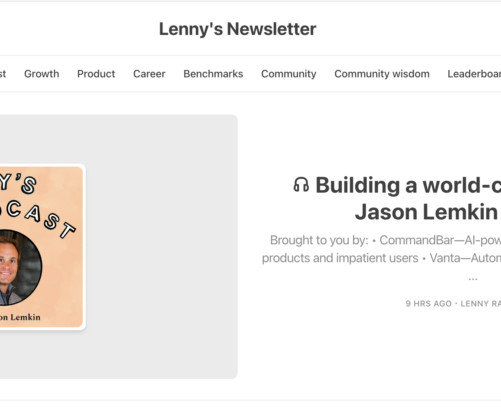
SaaStr
FEBRUARY 19, 2024
How to interview salespeople ? Unlike building a product team, there is no efficiency when building a sales org: half of your headcount will be in sales at $10m, $50m, or $100m in revenue. Per Lenny: “In our conversation, we discuss: ? How long a founder should be doing sales ? Signs it’s time to hire full-time salespeople ?
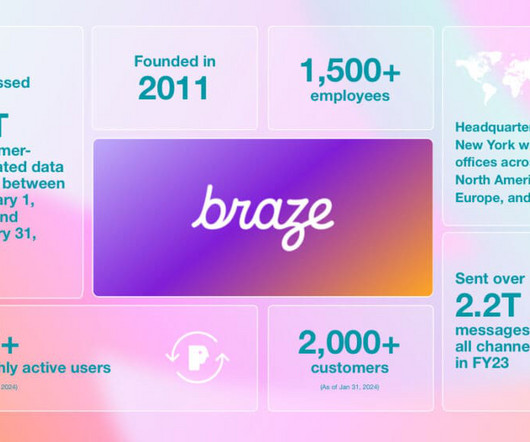
SaaStr
AUGUST 9, 2024
Determine the skills you want and how you’ll discover them in an interview. Headcount isn’t the right story for them, though. Eventually, this team moved out of growth, so their success wasn’t dependent on budget or headcount. Think about what you want a CSM to be: technical, customer-facing, or have industry experience.
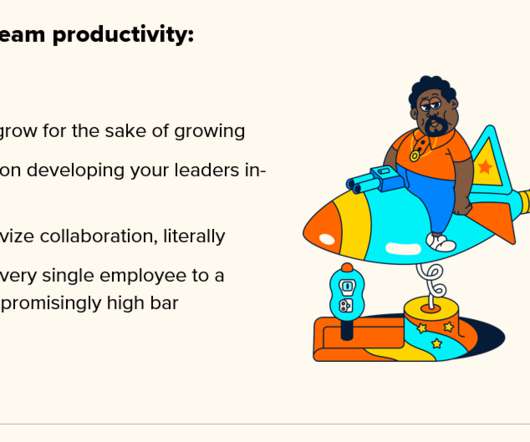
SaaStr
DECEMBER 19, 2022
Lots of SaaS founders are preoccupied with employee headcount as an important growth metric, but this indicator is not always true. As an example, Expensify includes a portion of their interview process where candidates solve a math problem on a whiteboard alongside their potential teammates.
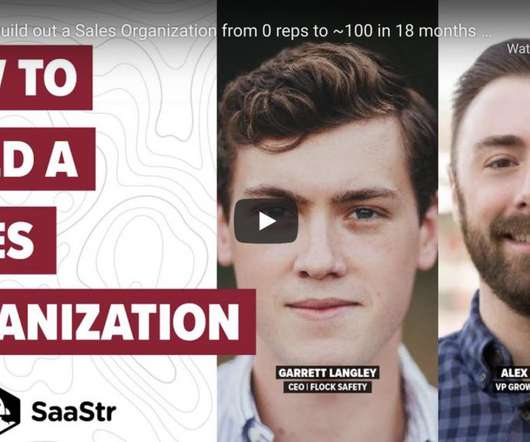
SaaStr
MARCH 5, 2021
When Garrett interviewed Alex, his challenge was to hire 30 reps within the first 30 days. Do many, many interview rounds. Also, pivot from Garrett’s initial idea and focus on revenue targets, not a specific headcount. #2 Alex’s first question was, how many recruiters do you plan to hire? . #1 Build a profile and pipeline.
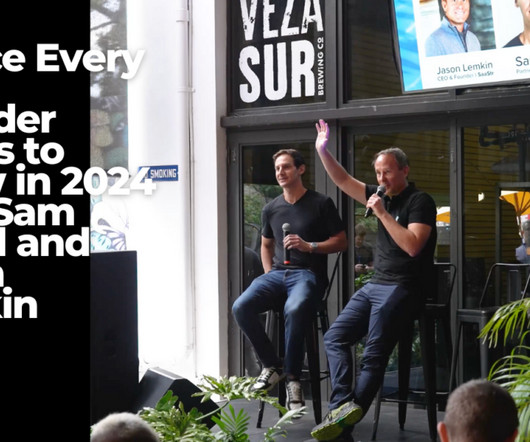
SaaStr
MARCH 20, 2024
Do you have to double your headcount to make it from $10M to $20M or even $2M to $5M? For headcount specifically, make sure that the constraint to growing faster is that you don’t have enough salespeople to work the demand that exists for your business. When those outcomes are achieved, the hire gets their headcount.

Sales Hacker
JULY 24, 2018
Decreased revenue per rep, High turnover as you scale headcount. We made our machine more efficient even as we scaled, grew headcount, and skyrocketed our revenue. In the first six months of the year, our team’s headcount grew by almost 60%, yet our revenue outpaced that, growing by 142%. Don’t ask them about it in theory.
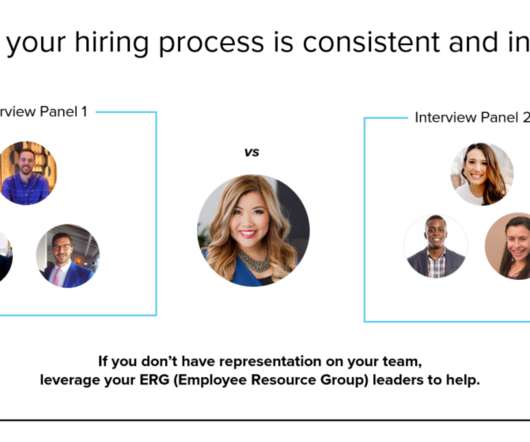
SaaStr
MARCH 22, 2022
This requires effort from your entire organization, and Handshake VP, Employer Partnerships Jessica Peluso outlines some changes that you can make to your brand, and your application, interview, and offer process that will help find the talent you are trying to attract and hire. Below is the transcript of Jessica’s session.

SaaStr
FEBRUARY 11, 2021
Because sales is a lead-driven but headcount- closed business. 10 Great Questions to Ask a VP Sales During an Interview. Let me give you a partial interview script that may help a bit. And the great VP of Sales all know this. To hit their number, they know they need the heads. Backfilling and Helping His/Her Sales Team.

Intercom, Inc.
AUGUST 20, 2019
Business needs and team headcounts will change as a company matures. This means that if an SDR shows she is ready for a promotion but headcount doesn’t exist for the next role, she will not be promoted until that headcount opens up. The takeaway: Exceeding SDR quota is step one for a promotion to a closing role.

Intercom, Inc.
OCTOBER 29, 2019
This data typically comes in three broad flavors: Firmographic: This includes employee headcount, revenue, vertical, business model, location, tech stack, web traffic, and other publicly available information about the customer. Consider these other examples: For business collaboration tools, headcount likely indicates differing needs.

SaaStr
DECEMBER 1, 2023
We’re still learning what world we’re in — some people interview over Zoom, some are focused on how to build teams in the current age, and many are dealing with a weird overhang from the SaaS explosion of 2021, quiet quitting, layoffs, and team turnover. In interviews, ask them if they want to close any in the first 90 days.

Intercom, Inc.
JANUARY 20, 2022
We surveyed and interviewed key people in our teams to understand how they worked and how they saw Intercom’s internal operations. We’ve done interviews. And sure enough, the feedback was that things were starting to slow down. Speed is a first-class citizen at Intercom, but it should be in every single company.

Intercom, Inc.
JULY 21, 2022
What started as a series of interviews by co-founder Des Traynor soon bloomed into hundreds of episodes where we explore how businesses are driving growth through customer relationships and how to build successful products at scale. I’m recording the first in what I expect to be a series of interesting interviews.

Sales Hacker
APRIL 5, 2021
Over the course of time, I’ve interviewed and talked to hundreds of sales candidates. Beyond obvious things like race, weight, age, and religion, there are a multitude of hiring biases that can affect decision-makers in positions of power when interviewing candidates for open roles. First impressions still count.

Intercom, Inc.
OCTOBER 26, 2021
You may not know what your team needs until the ideal candidate shows it to you in an interview. That said, there’s no one-size-fits-all profile that works for every company or even every hire. At Intercom, having a diverse team is a priority, and we’re open to candidates who show promise but might not check every box perfectly.

Practical Advice on SaaS marketing
DECEMBER 3, 2013
Besides working through your budget, marketing programs, headcount, and whatever else you need to have in place when the new year rolls around, I’d suggest you add another item: Review your value proposition and messages. Here’s why. Most of your marketing plans are meant to deliver your messages to your target audience. Ask your customers.

Intercom, Inc.
AUGUST 29, 2019
That’s why one of my favorite interview questions is, “What are you passionate about?” When I started, they had a big growth plan as far as headcount, but they were a little bit looser on processes and cadences and things like that framework I was talking about. Sales is a brutal profession.

Intercom, Inc.
JUNE 21, 2018
You need to build an efficient sales team…you can’t just throw money or headcount at things. You need to maximize everything you possibly can to beat the competition because you can’t just throw money or headcount at things. Did you know there was an appetite for this? That was the impetus for starting Sales Hacker.

SaaStr
OCTOBER 30, 2019
For a cross-functional role like product ops, it’s not only about convincing leadership for headcount and resources. The following is a summary of some of the best advice I’ve heard in dozens of interviews with products ops leaders: 1. Explain the “why”.

FastSpring
FEBRUARY 22, 2019
From my initial interview with our CEO, Chris, it was clear that company culture would be a big focus. I went from being the 8th hire at Invoca to helping grow headcount to 140 at the time of my departure. Q: What inspired you to join FastSpring? A: There were several things that inspired me to join FastSpring in 2017.

Sales Hacker
APRIL 29, 2021
In candid workflow interviews with reps from companies spanning the spectrum, we continue to hear why they hesitate to use the content that has been created for them. The size of your company and the volume of content you must produce each quarter will determine the headcount needed on your team. Content Management.

InsightSquared
NOVEMBER 19, 2018
If you have open headcount for Q1 be interviewing in Q4. Behind headcount equals behind plan. Make sure you have the right people in the right jobs. Deal with under-performers. Also, highlight your “A” players that are at risk to leave and put a plan in place to retain them. Have everyone participate.

Sales Enablement, SaaS and Growth
MARCH 23, 2020
The Horizons Framework is an effective way to categorise projects, which in turn helps with assigning budget, headcount and timelines. An example of diminishing returns is Google’s hiring process - the technology giant discovered that four interviews was enough to predict whether someone should be hired with 86% confidence.

Intercom, Inc.
JULY 12, 2018
As VP of Corporate Strategy at Twitter, Elad Gil was a key player as company headcount skyrocketed from 90 to 1,500 employees. This wasn’t Elad’s first experience with hyper growth – Google grew headcount 10x during his time as a product manager there – nor the last. What do you mean, and how do you navigate that challenge?

Sales Hacker
FEBRUARY 19, 2020
It’s your secret to finding the diamonds in the rough when you need more qualified leads, without increasing headcount. Should you start by interviewing leads? Whether you have too many leads or too few, prioritizing leads is a gamechanger. Draw data from all departments (not just sales). Where do you start with lead scoring?

Andreessen Horowitz
MARCH 21, 2024
On a much smaller scale, we’ve also started to see some leaders deploying their genAI budget against headcount savings, particularly in customer service. In 2024, however, many leaders are reallocating that spend to more permanent software line items; fewer than a quarter reported that genAI spend will come from innovation budgets this year.

Intercom, Inc.
FEBRUARY 1, 2018
Below is a lightly edited transcript of our interview. This is the second in a series of interviews over the next couple months about unlocking the potential of growth. If you enjoy the conversation and don’t want to miss the rest of the series, check out more episodes of our podcast.

BetterCloud
OCTOBER 14, 2020
But when I interviewed here, I knew I had to take the job—and I’ve loved it ever since. That includes things like headcount, improving our tools, and rethinking how we handle unique situations. An opportunity came up over at Namely and the office is downtown in Manhattan. We didn’t have to change anything.

ChurnZero
JANUARY 13, 2023
First, digital CS will become a way of life due to flat or reduced headcount. Reach out to one to two customers a week for a 20- to 30-minute interview. Ask the same questions to all the customers you interview. A few common themes emerged. You just need to ask. Then compare the answers.

Intercom, Inc.
JULY 25, 2018
There's a certain headcount above which the blogposts on "no managers", "flat structure", "no hierarchy" and the like seem to just… stop. Not learning how to interview managers or how to value management experience. — Des Traynor (@destraynor) November 21, 2015. Let’s drill into the last one.
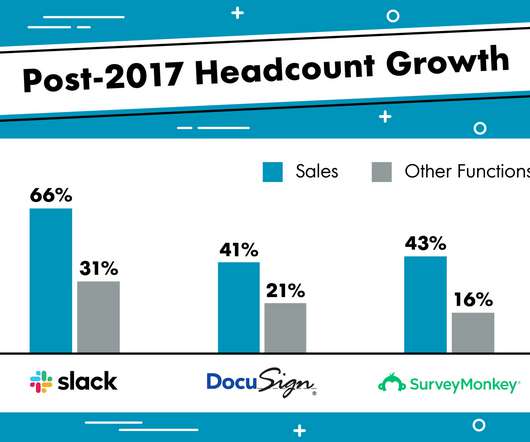
OpenView Labs
FEBRUARY 10, 2020
Sales now accounts for about 7% of the company’s headcount–a similar share of their workforce as marketing or product management. In a 2019 podcast interview , President Jay Simons emphasized that Atlassian has a low touch sales model. The rest of their headcount only grew by 31%. This is a good thing.

FastSpring
JULY 11, 2024
In this episode of Growth Stage, we interview Sahil Patel of Spiralyze about his thoughts on: Special considerations for B2B CRO. Podcast Full Interview: Audio Listen online or find it on more podcast services. They have the headcount. The best way to think about your B2B test data approach. Jump to video. Jump to transcript.

OpenView Labs
MAY 20, 2021
The same was true when I ran the People function at a software development consultancy that doubled its headcount to ~100 while reducing attrition from 40% to 5% voluntary in 18 months. I’ll often start interviews with a simple “What’s your why?”, They knew the downstream effects. Even kids and pets.
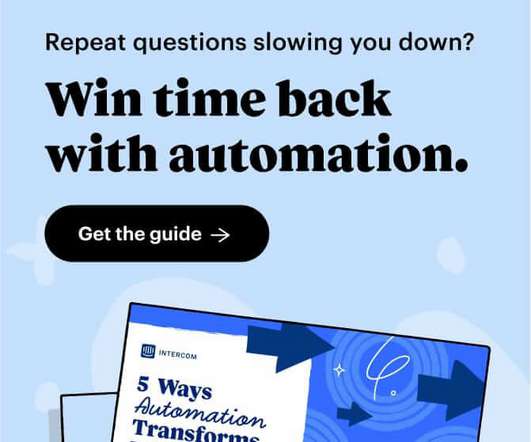
Intercom, Inc.
MAY 19, 2022
Using bots to triage conversations or solve simple queries frees your team to focus on more complex issues and allows you to scale without adding headcount. In the report, we learned that the average CSAT of the teams interviewed has increased by 11 percentage points, from 78% to 89% this year. Going proactive.

BetterCloud
NOVEMBER 4, 2021
From there, the next step was the interview, during which the nominees shared their unique IT challenges, approaches, and accomplishments. Once interviews were complete and summarized, an internal BetterCloud team voted for the winners. Like every year, selecting the best of the best was extremely difficult.

Sales Hacker
JUNE 16, 2021
Startup hurdle: headcount. If you need a new tool in one month, you’ll have to move fast through the steps: Needs assessment: Interview your reps to identify pain points, review your existing tech stack for gaps in functionality, and assess any unique security requirements. Set realistic goals and delegate tasks. SMB hurdle: buy-in.

Neil Patel
JANUARY 8, 2019
And to give you an idea of how many companies are making this mistake… I interviewed 208 companies that generate over a million bucks in revenue. Don’t be afraid of headcount… remember teams build great businesses, not individuals. Don’t just focus your efforts on traffic acquisition, focus on conversion optimization.

Intercom, Inc.
MAY 13, 2021
You can also read the full transcript of the interview, which has been lightly edited for clarity, below. Early on, how you might think about your capacity planning or your headcount allocation for CS is very much a cost-centric framework. Riding the hyper-growth wave. Linda: That’s a great question. Well, it’s not me.

OpenView Labs
JUNE 10, 2019
We’ve compiled our favorite articles, advice, podcasts and interviews in this guide. Read on for more insights from OpenView’s interviews with product experts. Nick Petri assesses how to find the right ratio of headcount between product management, UX and development. Product Management Mental Models for Everyone. Podcasts.

Chart Mogul
JULY 15, 2021
Same when you reach 100 people.” – Hiroshi Mikitani, Rakuten CEO, based on an interview with Phil Libin. We both noticed a similar pattern: alignment on key metrics breaks as headcount grows: More teams means more silos in processes and tools used to follow metrics. But when there are 10 people it’s all going to change again.

Chart Mogul
JULY 15, 2021
Same when you reach 100 people.” – Hiroshi Mikitani, Rakuten CEO, based on an interview with Phil Libin. We both noticed a similar pattern: alignment on key metrics breaks as headcount grows: More teams means more silos in processes and tools used to follow metrics. But when there are 10 people it’s all going to change again.
Expert insights. Personalized for you.
We have resent the email to
Are you sure you want to cancel your subscriptions?


Let's personalize your content